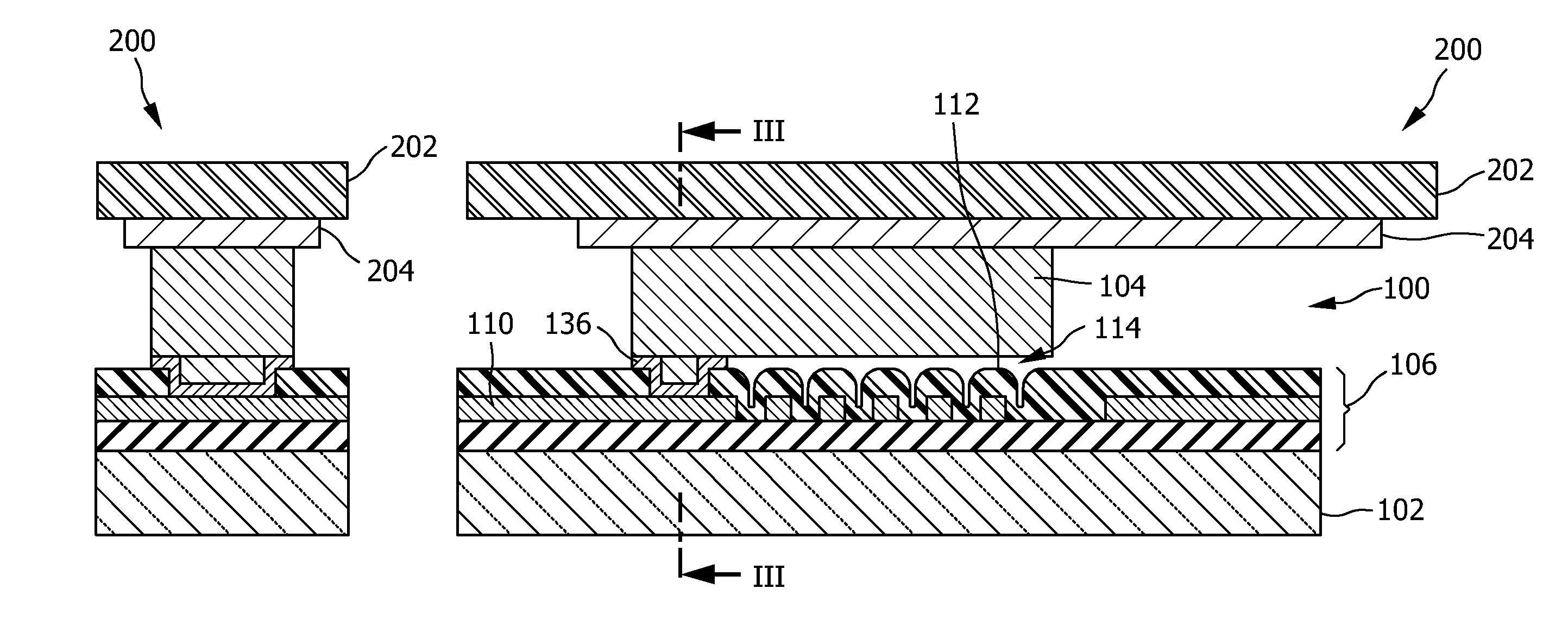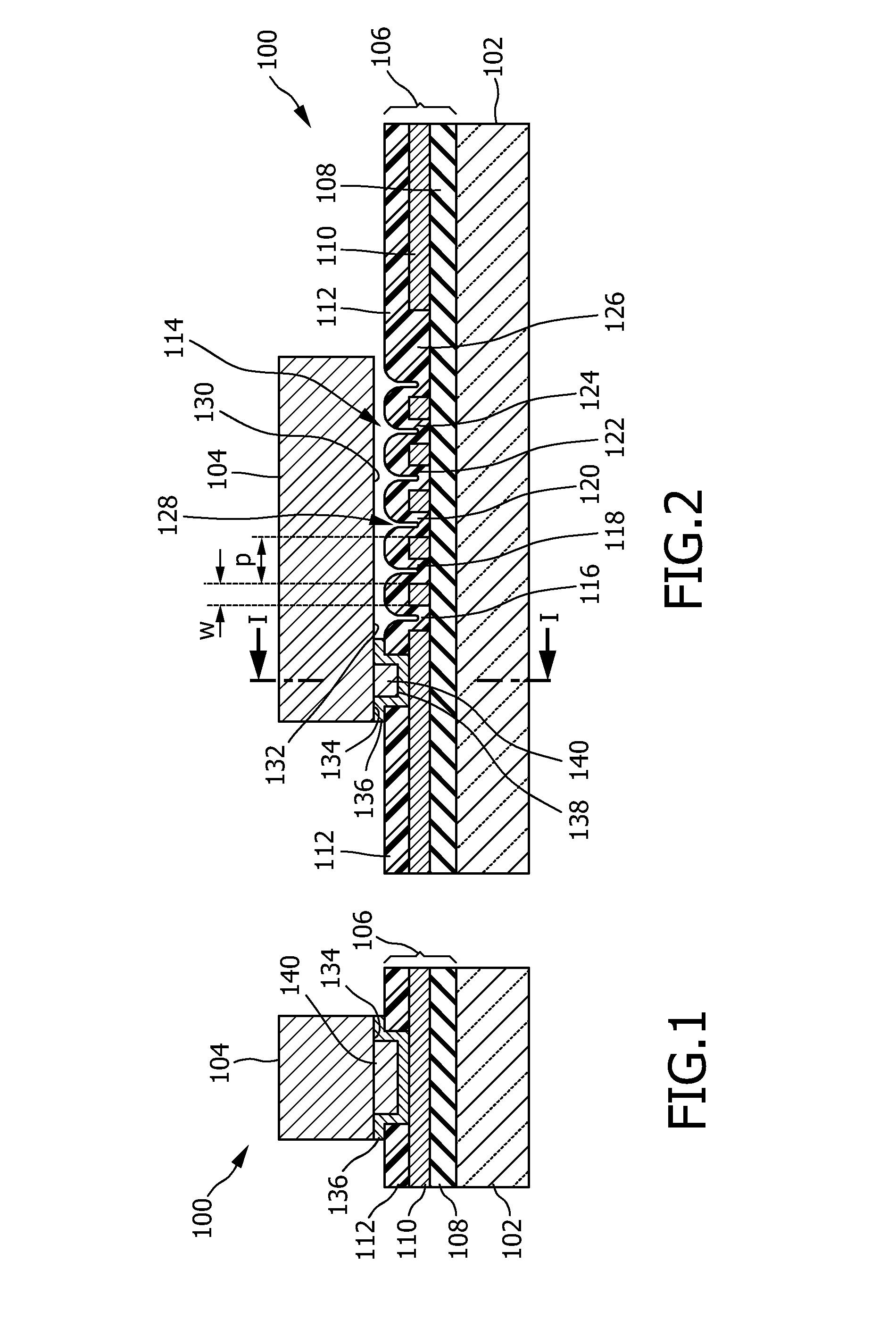Reducing stress between a substrate and a projecting electrode on the substrate
a technology of projecting electrodes and substrates, applied in the field of semiconductor components, can solve the problems of silicon breakout, delamination of layers, cracking of isolation layers on substrates, etc., and achieve the effect of improving thermal contact, mechanical connection footprint, and area fraction of the first substrate-face section
- Summary
- Abstract
- Description
- Claims
- Application Information
AI Technical Summary
Benefits of technology
Problems solved by technology
Method used
Image
Examples
Embodiment Construction
[0049]FIGS. 1 and 2 show schematic cross-sectional views of an embodiment of a semiconductor component. The two cross-sectional views of FIGS. 1 and 2 show sectionals planes, which are perpendicular to each other. The sectional plane shown in FIG. 1 is indicated by a dashed line I-I in FIG. 2. In the following, reference is made to FIGS. 1 and 2 in parallel.
[0050]The semiconductor component 100 has a substrate 102 and a projecting electrode in the form of a bump 104 on the substrate 102. The substrate 102 contains integrated circuits (not shown), and is covered by a layer stack 106, which contains an isolation layer 108, a metallization layer 110, and a passivation layer 112. The passivation layer 112 is made of silicon dioxide or silicon oxynitride or silicon nitride or a combination of these, for instance in the form of a layer structure, such as a sandwich layer structure. Organic materials are also possible, e.g., polyimide. The metallization layer is made of Al with a content o...
PUM
 Login to View More
Login to View More Abstract
Description
Claims
Application Information
 Login to View More
Login to View More - R&D
- Intellectual Property
- Life Sciences
- Materials
- Tech Scout
- Unparalleled Data Quality
- Higher Quality Content
- 60% Fewer Hallucinations
Browse by: Latest US Patents, China's latest patents, Technical Efficacy Thesaurus, Application Domain, Technology Topic, Popular Technical Reports.
© 2025 PatSnap. All rights reserved.Legal|Privacy policy|Modern Slavery Act Transparency Statement|Sitemap|About US| Contact US: help@patsnap.com



